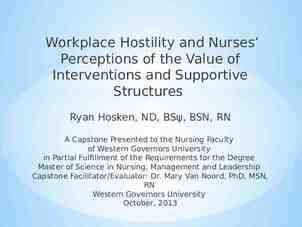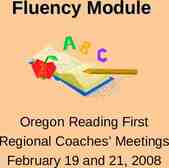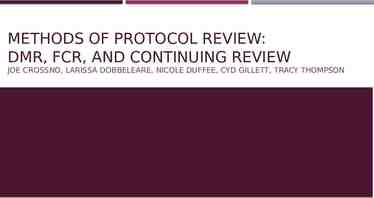Introduction to Criminology CRJ 270 Instructor: Jorge Pierrott
44 Slides1,007.50 KB
Introduction to Criminology CRJ 270 Instructor: Jorge Pierrott
Criminology Today AN INTEGRATIVE INTRODUCTION SEVENTH EDITION CHAPTER 1 What Is Crime? Criminology Today, 7th Edition Frank Schmalleger Copyright 2015 by Pearson Education, Inc. All Rights Reserved
Instructor Introduction Jorge Pierrott Mobile: (775) 232-7036 Please text me for emergency only Email: [email protected] Criminology Today, 7th Edition Frank Schmalleger Copyright 2015 by Pearson Education, Inc. All Rights Reserved
Chapter Objectives After reading this chapter, students should be able to answer the following questions: What is crime? What is the definition of crime that the author of this textbook has chosen to use? What is deviance? How are crime and deviance similar? How do they differ? Who decides what should be criminal? How are such decisions made? What is the theme of this book? Upon what two contrasting viewpoints does it build? What does it mean to say that “criminal activity is diversely created and variously interpreted”? Criminology Today, 7th Edition Frank Schmalleger Copyright 2015 by Pearson Education, Inc. All Rights Reserved
Introduction Crime-related entertainment extremely popular today. Inexplicability of crime fascinates people. This text examines causative factors in effect when a crime is committed. It encourages an appreciation of the challenges of crafting effective crimecontrol policy. Criminology Today, 7th Edition Frank Schmalleger Copyright 2015 by Pearson Education, Inc. All Rights Reserved
What are your favorites? 22. Orange is the New Black – Prison Drama 21. Luther – Crime Drama 15. Homeland – Crime/Terrorist Drama 14. Walking Dead – Violent Drama 13. American Horror Story – Horror/Crime Drama 12. Top of the Lake – Mystery/Crime Drama 8. Boardwalk Empire – Crime Drama 7. Archer – Crime/Spy/Comedy 5. The Americans – Crime/Spy Drama 4. Game of Thrones – Fantasy/Crime/Violent Drama 3. Justified – Crime Drama 2. Hannibal – Crime Drama 1. Breaking Bad – Crime Drama List drafted by: Slant Magazine Criminology Today, 7th Edition Frank Schmalleger Copyright 2015 by Pearson Education, Inc. All Rights Reserved
Impact of the Media on Crime What are the typical images on crime? How are they distorted by the media? What types of crimes are normally featured? How “real” are reality TV shows? Do you believe crime related shows and information leave viewers with a mistaken impression of law enforcement? Criminology Today, 7th Edition Frank Schmalleger Copyright 2015 by Pearson Education, Inc. All Rights Reserved
Activity 1 Gather up in your assign groups and discuss the following: Discuss TV shows such as Cops, NCIS, Blue Bloods, Breaking Bad and provide the following information: What is commonly the gender and race of the suspects? The gender and race of the police officers? The type of crime? The products being advertised during these programs. Criminology Today, 7th Edition Frank Schmalleger Copyright 2015 by Pearson Education, Inc. All Rights Reserved
What is Crime? Four definitional perspectives Legalistic Political Sociological Psychological continued on next slide Criminology Today, 7th Edition Frank Schmalleger Copyright 2015 by Pearson Education, Inc. All Rights Reserved
What is Crime? Perspective is important because it determines the assumptions we make and the questions we ask This book uses the legalistic perspective Criminology Today, 7th Edition Frank Schmalleger Copyright 2015 by Pearson Education, Inc. All Rights Reserved
Legalistic Perspective Crime: Human conduct in violation of the criminal laws of a state, the federal government, or a local jurisdiction that has the power to make such laws continued on next slide Criminology Today, 7th Edition Frank Schmalleger Copyright 2015 by Pearson Education, Inc. All Rights Reserved
Legalistic Perspective Key shortcoming Yields moral high ground to powerful individuals who can influence lawmaking Laws are social products – crime is socially relative, created by legislative activity Criminology Today, 7th Edition Frank Schmalleger Copyright 2015 by Pearson Education, Inc. All Rights Reserved
Political Perspective Crime: The result of criteria that have been built into the law by powerful groups and are then used to label selected undesirable forms of behavior as illegal Laws serve the interests of the politically powerful Crimes are behaviors those in power perceive as threats to their interests Criminology Today, 7th Edition Frank Schmalleger Copyright 2015 by Pearson Education, Inc. All Rights Reserved
Sociological (Sociolegal) Perspective Crime: An antisocial act of such a nature that its repression is necessary or is supposed to be necessary to the preservation of the existing system of society Crime is an offense against human relationships first, a violation of law second Criminology Today, 7th Edition Frank Schmalleger Copyright 2015 by Pearson Education, Inc. All Rights Reserved
Psychological (Maladaptive) Perspective Crime: Problem behavior, especially human activity that contravenes the criminal law and results in difficulties in living within a framework of generally acceptable social arrangements Any behavior which is maladaptive would be considered crime Includes any harmful or potentially harmful behaviors Criminology Today, 7th Edition Frank Schmalleger Copyright 2015 by Pearson Education, Inc. All Rights Reserved
Crime and Deviance Deviant behavior Human activity that violates social norms Deviance and crime overlap – not identical Delinquency: Violations of the criminal law and other misbehavior committed by young people Criminology Today, 7th Edition Frank Schmalleger Copyright 2015 by Pearson Education, Inc. All Rights Reserved
Figure 1-2 The Overlap between Deviance and Crime Source: Schmalleger, Frank J., Criminology. Printed and Electronically reproduced by permission of Pearson Education, Inc., Upper Saddle River, New Jersey. Criminology Today, 7th Edition Frank Schmalleger Copyright 2015 by Pearson Education, Inc. All Rights Reserved
What Should Be Criminal? Lack agreement about appropriate legal status of behaviors such as drug use, abortion, gambling, etc. Question answered differently by two contrasting perspectives Consensus Pluralist Criminology Today, 7th Edition Frank Schmalleger Copyright 2015 by Pearson Education, Inc. All Rights Reserved
Activity #2 Make a list of five legal behaviors, which you consider deviant. Compare and contrast the items on your lists. Focus on the wide range of opinions present among a fairly homogenous group (university students studying criminal justice). Discuss possible reasons for differing opinions (e.g., religious beliefs, profession, prior experiences with the criminal justice system). Criminology Today, 7th Edition Frank Schmalleger Copyright 2015 by Pearson Education, Inc. All Rights Reserved
What Should Be Criminal? Consensus Laws enacted to criminalize behaviors when members of society agree Homogeneous societies Shared consensus hard to achieve in diverse multicultural societies Criminology Today, 7th Edition Frank Schmalleger Pluralist Behaviors criminalized through a political process, after debate over appropriate course of action Involves legislation, appellate court action Most applicable to diverse societies Copyright 2015 by Pearson Education, Inc. All Rights Reserved
What Is Criminology? Wide variety of definitions available Text definition of criminology: An interdisciplinary profession built around the scientific study of crime and criminal behavior, including their manifestations, causes, legal aspects, and control Includes consideration of possible solutions to crime problem Criminology Today, 7th Edition Frank Schmalleger Copyright 2015 by Pearson Education, Inc. All Rights Reserved
Criminology’s Basic Questions Why do crime rates vary? Why do individuals differ as to criminality? Why is there variation in reactions to crime? What are the possible means of controlling criminality? Criminology Today, 7th Edition Frank Schmalleger Copyright 2015 by Pearson Education, Inc. All Rights Reserved
What Is Criminology? Criminology is interdisciplinary Criminology needs to be integrated Criminology contributes to criminal justice: Application of the criminal law and study of the components of the justice system Police, courts, corrections Focus on control of law-breaking Criminology Today, 7th Edition Frank Schmalleger Copyright 2015 by Pearson Education, Inc. All Rights Reserved
What Do Criminologists Do? Criminologist Studies crime, criminals and criminal behavior Criminalist A specialist in the collection and examination of the physical evidence of crime continued on next slide Criminology Today, 7th Edition Frank Schmalleger Copyright 2015 by Pearson Education, Inc. All Rights Reserved
What Do Criminologists Do? Criminal Justice Professionals Do the day-to-day work of the criminal justice system continued on next slide Criminology Today, 7th Edition Frank Schmalleger Copyright 2015 by Pearson Education, Inc. All Rights Reserved
What Do Criminologists Do? Academic criminologists Ph.D. in criminology, CJ, related field Teach in universities Conduct research to advance criminological knowledge Publish in journals Criminology Today, 7th Edition Frank Schmalleger Other career tracks Work in CJS Private security or private investigation Law school Work for legislative bodies, provide expertise to civil organizations Copyright 2015 by Pearson Education, Inc. All Rights Reserved
Theoretical Criminology Subfield of general criminology mainly found in colleges and universities Assume explanations for criminal behavior continued on next slide Criminology Today, 7th Edition Frank Schmalleger Copyright 2015 by Pearson Education, Inc. All Rights Reserved
Theoretical Criminology Theory: Made up of clearly stated propositions that affirm or assume relationships between events and things under study Criminologists have developed many theories to explain and understand crime continued on next slide Criminology Today, 7th Edition Frank Schmalleger Copyright 2015 by Pearson Education, Inc. All Rights Reserved
Theoretical Criminology General theory Tries to explain all/most forms of crime through a single overarching approach Unicausal theory Assumes a single identifiable source for all serious deviant and criminal behavior Integrated theory Tries to explain crime by merging concepts from different sources Criminology Today, 7th Edition Frank Schmalleger Copyright 2015 by Pearson Education, Inc. All Rights Reserved
Criminology and Social Policy Translational criminology Focuses on translating research results into workable social policy Sound social policy needs to be linked to objective findings of well-conducted criminological research Criminology Today, 7th Edition Frank Schmalleger Copyright 2015 by Pearson Education, Inc. All Rights Reserved
The Theme of This Text Social Problems Crime a manifestation of underlying social problems Public health model to deal with crime Macro approach Criminology Today, 7th Edition Frank Schmalleger Social Responsibility People responsible for own behavior, choose crime over legitimate options Personalized crimereduction strategies Micro approach Copyright 2015 by Pearson Education, Inc. All Rights Reserved
The Social Context of Crime Crime does not occur in a vacuum – every crime has a unique set of Causes Consequences Participants Crime provokes reactions from many sources Reactions to crime may affect future criminal events Criminology Today, 7th Edition Frank Schmalleger Copyright 2015 by Pearson Education, Inc. All Rights Reserved
Figure 1-7 Interpreting the Criminal Event Criminology Today, 7th Edition Frank Schmalleger Copyright 2015 by Pearson Education, Inc. All Rights Reserved
The Causes and Consequences of the Criminal Event Crime is a social event, not an isolated individual activity Crime is socially relative continued on next slide Criminology Today, 7th Edition Frank Schmalleger Copyright 2015 by Pearson Education, Inc. All Rights Reserved
The Causes and Consequences of the Criminal Event Crime results from the coming together of inputs provided by the offender, the victim, the criminal justice system, and society Foreground – features that immediately determine the nature of the crime Background causes – generic contributions to the crime Criminology Today, 7th Edition Frank Schmalleger Copyright 2015 by Pearson Education, Inc. All Rights Reserved
Crime and the Offender Background Life experiences Biology/genetic inventory Personality Values/beliefs Skills/knowledge Criminology Today, 7th Edition Frank Schmalleger Foreground Motivation Specific intent State of mind (druginduced) Copyright 2015 by Pearson Education, Inc. All Rights Reserved
Crime and the Criminal Justice System Background CJS contributes to crime through failure to: Foreground Proper system response may reduce crime Prevent crime Identify/inhibit specific offenders Prevent release of recidivists Presence/absence of police officers Availability of official assistance Willingness of officers to intervene pre-crime Response time Criminology Today, 7th Edition Frank Schmalleger Copyright 2015 by Pearson Education, Inc. All Rights Reserved
Crime and the Victim Background Passive presence Active contributions through lifestyle Criminology Today, 7th Edition Frank Schmalleger Foreground Victim precipitation Active victim participation in initial stages of criminal event Victim instigates chain of events resulting in victimization Copyright 2015 by Pearson Education, Inc. All Rights Reserved
Crime and Society Background Legislation defining crime Generic social practices and conditions Socialization process Criminology Today, 7th Edition Frank Schmalleger Foreground Distribution of resources Accessibility of services Copyright 2015 by Pearson Education, Inc. All Rights Reserved
The Consequences of Crime Outputs/immediate consequences affect those parties directly involved Real impact mediated by perceptual filters Results in ongoing interpretations before, during, after crime Everyone associated with a crime engages in interpretations Criminology Today, 7th Edition Frank Schmalleger Copyright 2015 by Pearson Education, Inc. All Rights Reserved
Integrative Approach to Crime Text takes 3-D integrative view of crime Try to identify, understand causes of crime Highlight processes involved in the criminal event Analyze interpretation of the crime phenomenon continued on next slide Criminology Today, 7th Edition Frank Schmalleger Copyright 2015 by Pearson Education, Inc. All Rights Reserved
Integrative Approach to Crime Crime seen as emergent activity that Arises out of past complex causes Assumes a course building on immediate interrelationships Elicits formal response from CJS, shapes public perceptions, may lead to changes in social policy Criminology Today, 7th Edition Frank Schmalleger Copyright 2015 by Pearson Education, Inc. All Rights Reserved
The Primacy of Sociology? Many disciplines have made important contributions to criminology Many criminologists today operate primarily from a sociological perspective Many modern theories of criminal behavior based in sociology continued on next slide Criminology Today, 7th Edition Frank Schmalleger Copyright 2015 by Pearson Education, Inc. All Rights Reserved
The Primacy of Sociology? New and emerging perspectives being recognized, but sociological perspective dominates Criminology Today, 7th Edition Frank Schmalleger Copyright 2015 by Pearson Education, Inc. All Rights Reserved

















































